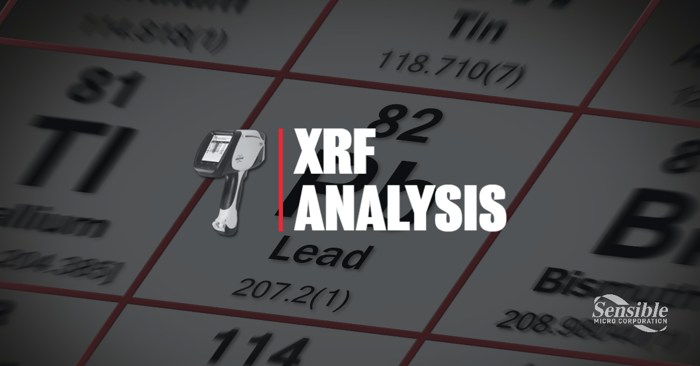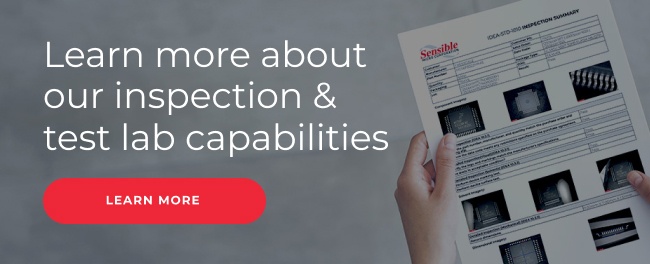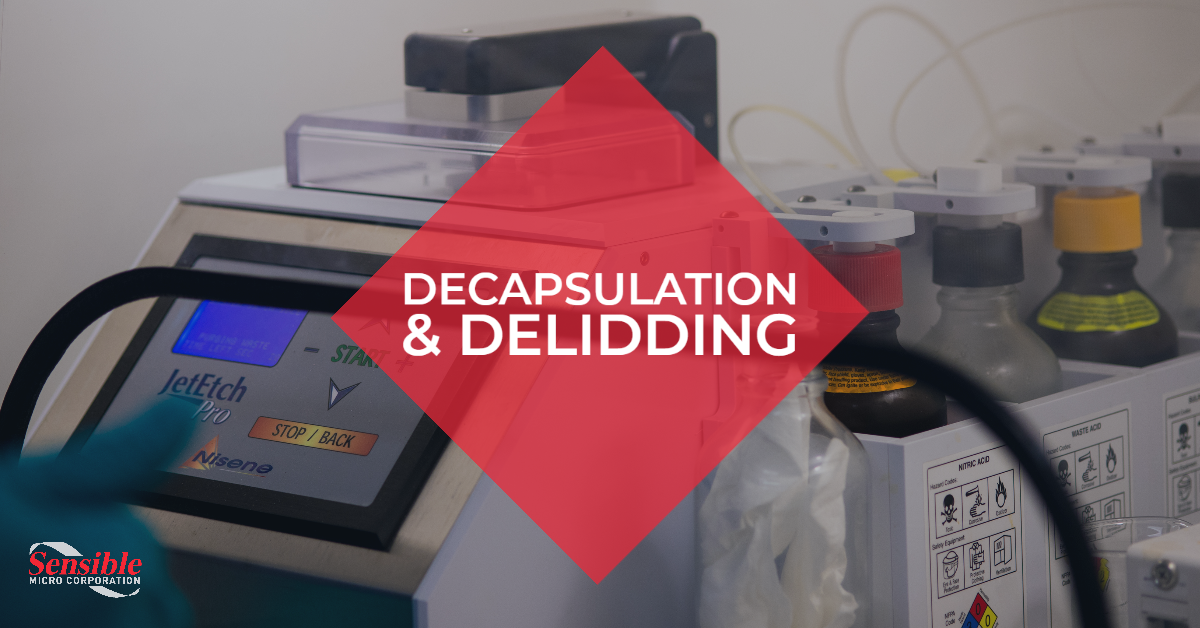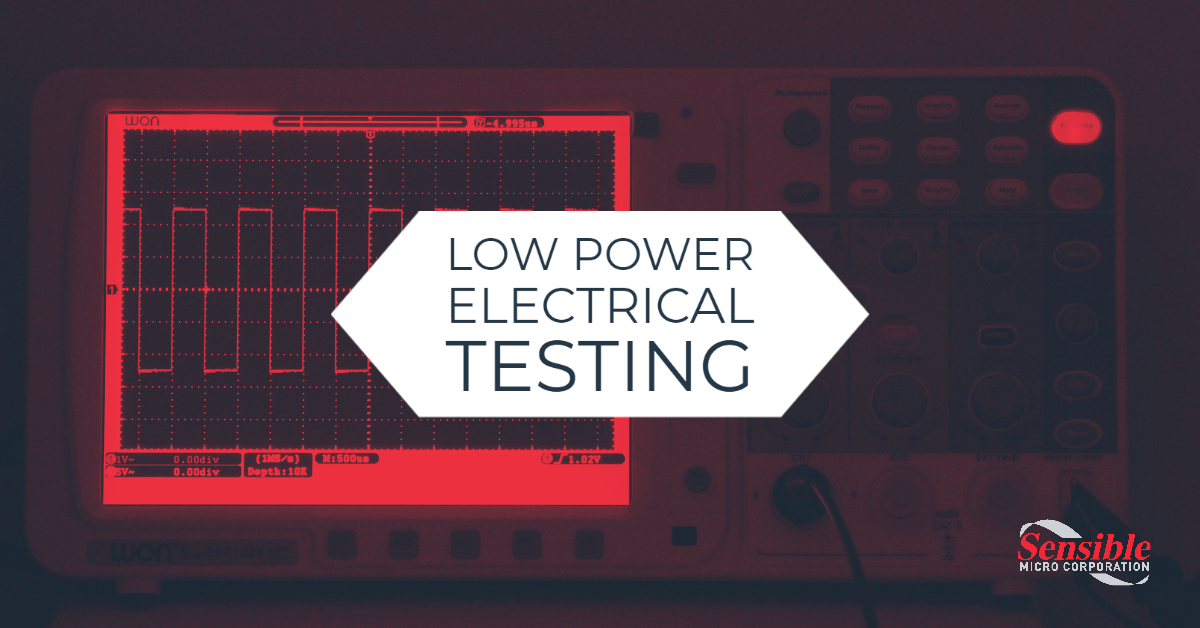In the electronics industry, XRF analysis is used to test printed circuit boards (PCB), integrated circuits (IC), and individual electronic components. Analysis is not always necessary when supplier documentation with a strong audit trail is available. However, when such documentation is not available and elemental composition verification is needed, this analysis will usually be required.
In this post, we highlight key information about XRF technology, focusing on how it is used in electronic component testing.
What is XRF Analysis?
XRF, which stands for X-Ray Fluorescence, is an analytical technique that determines elemental composition. It's a quick, non-destructive, highly accurate analysis that can be conducted on solids, liquids, and powders.
It works on the process of ionization, meaning that the atoms within the sample material may ionize when exposed to the gamma rays or other short-wavelength x-ray beams. It is able to determine elemental composition by measuring the secondary x-ray beam, being the fluorescent x-ray, emitted from the tested sample when it is excited by a primary x-ray source.
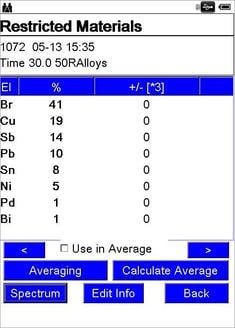
An XRF machine needs both a detector and an x-ray source in order to work. During the analysis, an x-ray beam is directed at the sample’s surface. When the initial x-ray beam hits it, the atoms in the sample produce a fluorescent x-ray beam that is then processed by the detector. Differences in the energy emitted from both the initial and the fluorescence x-ray beams are associated with specific elements under analysis. This is how XRF technology is able to determine elemental composition.
Applications:
XRF analysis can be performed on standard, de-lidded, decapsulated, or otherwise prepared electronic components to test for quality, check for possible counterfeiting, and detect hazardous materials. It is required for different applications including, but are not limited to:
- Determining Compliance to Environmental Regulations: Environmental regulations prohibit the use of certain materials to be present in electronic components. In order to ensure compliance, an XRF analysis is often performed. For instance, it is used globally to determine if parts are RoHS compliant.
- Retinning: Electronic components usually undergo an XRF analysis before and after the retinning process. Beforehand, it is often done to define the initial elemental composition, looking specifically for what metals are present. When parts get retinned, component leads are replaced with a different metallic type via hot solder dipping. Afterward, the analysis is repeated to determine the viability and quality of the newly retinned parts.
- Industry Standard Test Requirements: XRF analysis is often a required part of many industry standards because it is a fast, non-destructive testing method.For example, AS6081 requires it as a mandatory part of a lead finish evaluation.
- Counterfeit Mitigation: XRF analysis can also be used to aid in counterfeit mitigation as a way to help identify suspect parts. Counterfeit electronic components typically have some level of material difference in comparison to authentic parts. The findings can be compared to a manufacturers component datasheet, making incongruencies easier to spot.
Procuring with Confidence:
When procuring parts for our customers, Sensible Micro is able to perform XRF analyses for all the applications mentioned above. In our on-site, technically-advanced inspection lab, 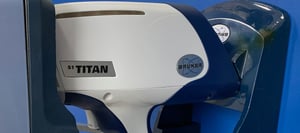 we use the high-precision Bruker S1 Titan XRF Analyzer to evaluate the elemental breakdown of lead materials, determine if they are authentic, and verify if there are any hazardous substances present. All of our GCAT inspections include an XRF analysis and come with a certificate of conformance. Through our portal, customers can view their quality inspection reports, including hi-resolution photos, for their orders. Schedule a call with a Sensible Micro representative today to discuss your sourcing and testing needs.
we use the high-precision Bruker S1 Titan XRF Analyzer to evaluate the elemental breakdown of lead materials, determine if they are authentic, and verify if there are any hazardous substances present. All of our GCAT inspections include an XRF analysis and come with a certificate of conformance. Through our portal, customers can view their quality inspection reports, including hi-resolution photos, for their orders. Schedule a call with a Sensible Micro representative today to discuss your sourcing and testing needs.















